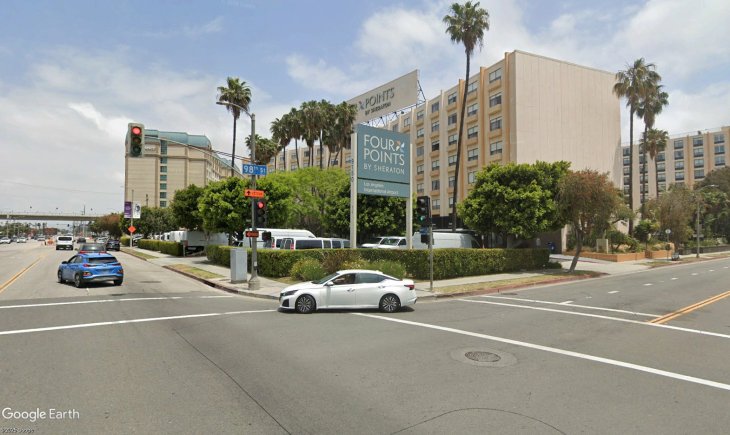![Norm's restaurant on La Cienega Boulevard in Los Angeles, California (By Minnaert [Own work] [CC BY-SA 3.0 [http://creativecommons.org/licenses/by-sa/3.0] or GFDL [http://www.gnu.org/copyleft/fdl.html], via Wikimedia Commons).](http://smmirror.wpengine.com/wp-content/uploads/2015/05/NormsRestaurant_LaCienega-300x225.jpg)
The Norms at 470 N. La Cienega Blvd will be treated as a city historic- cultural monument, meaning further review by city leaders would be required before the property’s new owners could commence with any demolition at the site.
Councilman Paul Koretz, whose district includes the Norms, said city officials have never seen the level of “community outpouring” that accompanied its landmark bid. He said the building’s mid-century commercial architecture is “significant,” and the 24-hour diner is a “home away from home” for many Angelenos.
The council backed a Koretz motion that instructs city officials to prioritize the building’s “Googie features” on the “west and south facing facades” that “the community and visitors around the world have come to associate with Norms La Cienega and this important and increasingly rare style of architecture.”
Television director-producer Matthew Weiner, speaking at an event earlier this year in support of giving the diner historical status, said his critically acclaimed drama “Mad Men” — which just wrapped up its final season — got its start at Norms.
“I actually wrote my notes for the beginning of ‘Mad Men’ in this coffee shop,” Weiner said, adding that he also penned his college thesis about Norms.
Weiner said the building — with its mosaics, glass architecture and space-age-style signs — “is a fixture, in my imagination in particular as an Angeleno and as a high school student looking for a 24-hour place to take a date, with not much money in my pocket at the time.”
“I have a very, very close artistic relationship with this building,” Weiner said, adding that it would be treated like a museum in any other city. “It is an inspiration and a treasure, and it should be treated as such.”
The Los Angeles Conservancy’s application to obtain landmark status for the diner won the backing of the Cultural Heritage Commission in March.
The diner was built in 1956 and designed by architects Louis Armet and Eldon.





















